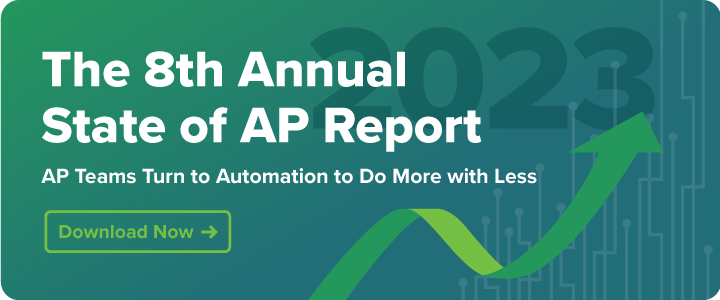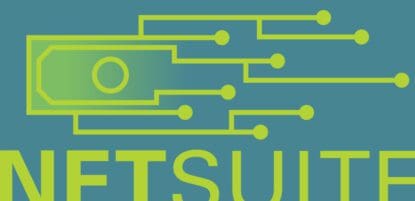Anyone in charge of accounts payable for a company that completes a lot of international payments knows full well this isn’t always the smoothest process. With the rise of globalization, cross-border payments are becoming the norm, yet the technology needed to make these transactions as efficient as possible is only now just starting to catch up to demand.
As companies transition from paper checks to electronic forms of payment, they are seeking to define the best way to work with international vendors and make the necessary cross-border payments. To this end, cross-border payments have a distinct advantage in some respects: The actual movement of money across borders is relatively simple and direct, with most payments made via wire. This means funds are transacted in virtually real-time, giving businesses access to the funds sent and received almost instantaneously.
However, the process to make cross-border payments is challenging and manual for most middle market companies.

What Are Cross-Border Payments?
Cross-border payments are the act of facilitating payments internationally. As business becomes increasingly global, it’s important for businesses to easily make payments. In fact, many banks have noted that these types of payments have continued to increase over the last few years. However, international payments can be difficult to manage, since companies may encounter hidden fees or multiple currencies in their AP workflows.
Types of Cross-Border Payments
There are several types of cross-border payments. These include:
Wholesale Cross-Border Payments
Wholesale cross-border payments generally involve large sums of money between banks or governments.
Retail Cross-Border Payments
Retail cross-border payments involve payments made internationally involving companies or consumers. These can be further broken out into the following:
B2B Payments: B2B cross-border payments involve a business paying another company for goods or services exchanged.
B2C Payments: B2C payments include consumers who may buy from an international business.
Why Cross-Border Payments Matter
Cross-border payments are important for a number of reasons:
Operate Globally
Business is no longer siloed to a specific region of the world. As a result of the pandemic, the world has increasingly shifted to a hybrid or remote work model. Consumers are also connecting online, which gives businesses an opportunity to operate more globally.
Leverage Local Expertise
By working with local vendors, your company can benefit from specific expertise, while reducing shipping and processing costs.
What Are the Challenges of Cross-Border Payments?
For companies looking to operate internationally, there are many challenges, including:
Manual AP Processes
Automating accounts payable makes all associated processes more streamlined, reducing the amount of time companies have to devote to the more menial and error-prone AP work. This is especially true of handling cross-border wire payments. Indeed, many companies that haven’t automated their AP processes – and therefore have to handle cross-border transactions manually – experience significant difficulties because of the need to handle those payments one by one. Companies without streamlined cross-border payment processes in place often avoid working with international vendors. Even those with some degree of AP automation in place may still be shy about processing cross-border payments as it would require them to contact their banks, thus slowing the process and introducing complexity.
Disconnected Domestic and International Workflows
When the AP process is manual, the domestic and international AP workflow may feel disconnected. AP automation makes it easy for companies to embrace one process that works across a wide range of countries and currencies.
Hidden Fees
When transferring international payments, many banks charge an intermediary fee that can eat into your overall costs. It may also be difficult to calculate these costs in advance, which can result in vendors not getting paid what they are owed. As a result, vendor relationships can become strained.
Currency Exchange Rate Risks
Exchange rates are constantly fluctuating, making it difficult to estimate exactly how much an invoice will cost. Additionally, many banks charge a higher daily rate to minimize their own risk, which doesn’t allow companies to take advantage of lower rates throughout the day.
3 Steps for a Better Cross-Border Payment Process
For companies looking to improve their international payment process, they should do the following steps.
Step 1: Reduce Hidden Fees
Platforms, like Mineraltree, cut out the intermediary fees. As a result, vendors are paid the correct amount, while companies reduce their overhead costs.
Step 2: Take Advantage of the Best Exchange Rate
MineralTree doesn’t lock customers into a fixed rate, reducing unnecessary fees meant to protect banks from fluctuations throughout the day. Instead AP teams can determine the best time to pay vendors based on the current rate.
Step 3: Automate the End-to-End Process
When companies automate cross-border payments – following a similar process as they might with a check or ACH payment – AP managers or controllers can expect greater accuracy on every one of those transactions. Even better, working with an automated payment solution like MineralTree eliminates the need to manually contact the bank handling the transaction, an action which creates critical vulnerabilities and opportunities for miscommunication. By utilizing tools such as international accounts payable automation, these same companies can automate wire payments to their international vendors without having to contact their bank directly.
Trends in Cross-Border Payments
Cross-border payments are changing the market rapidly. Below are some things finance teams should consider.
B2C Payments are Rising, but B2B Continues to Dominate
B2C payments are expected to grow twice as fast as B2B cross-border payments over the next seven years. However, B2C payments continue to be a small portion of the overall cross-border payment volume when compared to B2B.
Digitization Will Continue to Be a Focus
Digital transformation will continue to impact companies over the next few years. Finance leaders are looking to improve operational efficiency across their departments, while gaining more insight into key data and analytics. As a result, AP has been the number one prioritization for companies looking to digitize their finance team.
Cross-Border Payments Will Continue to Get Easier
Improving cross-border payments is a key initiative for the G20. They have identified a series of challenges related to speed, access and transparency they seek to solve. Although the plan is to make international payments easier, companies should not wait to improve their AP processes. These changes will take years to implement.
Final Thoughts
The fact is that AP automation has many benefits for companies looking to keep up with recent trends and get a better handle on their finances overall. And with international transactions only likely to become more common, companies can get out in front of the trend and adopt the latest accounts payable software to automate AP processes. By turning to an industry-leading AP automation solution, companies will be better off when it comes to handling the demands of modern business – both domestically and internationally.

Frequently Asked Questions
Why Are Cross-Border Payments Difficult?
Cross-border payments are difficult for a number of reasons, including lack of transparency, speed, and hidden fees.
How Do Cross-Border Payments Work?
Cross-border payments involve two parties who have bank accounts in different countries. These are generally facilitated via wire transfer or ACH.
What is an Example of a Cross-Border Payment?
An example of a cross-border payment would be using a bank transfer, credit card, or a virtual card to process or transfer funds across country borders.



